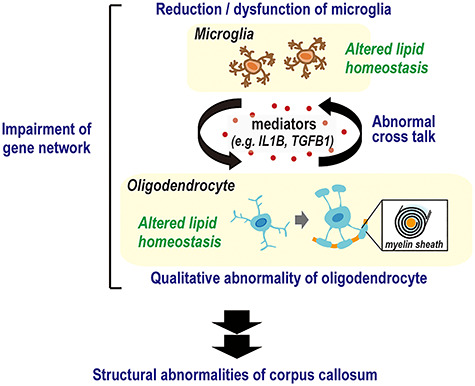Figure 4.

Potential mechanism of corpus callosum abnormality development in schizophrenia. In schizophrenia, reduced and dysfunctional microglial cells result in abnormal cross-talk with oligodendrocytes via mediators such as IL1B and TGFB1. This leads to transcriptional perturbation caused by impaired schizophrenia-related gene network including NFATC2 and CSF1R, resulting in abnormal lipid metabolism. This disturbs the normal properties and functions of oligodendrocytes and the myelin sheath, causing structural and functional deficits in the corpus callosum.
